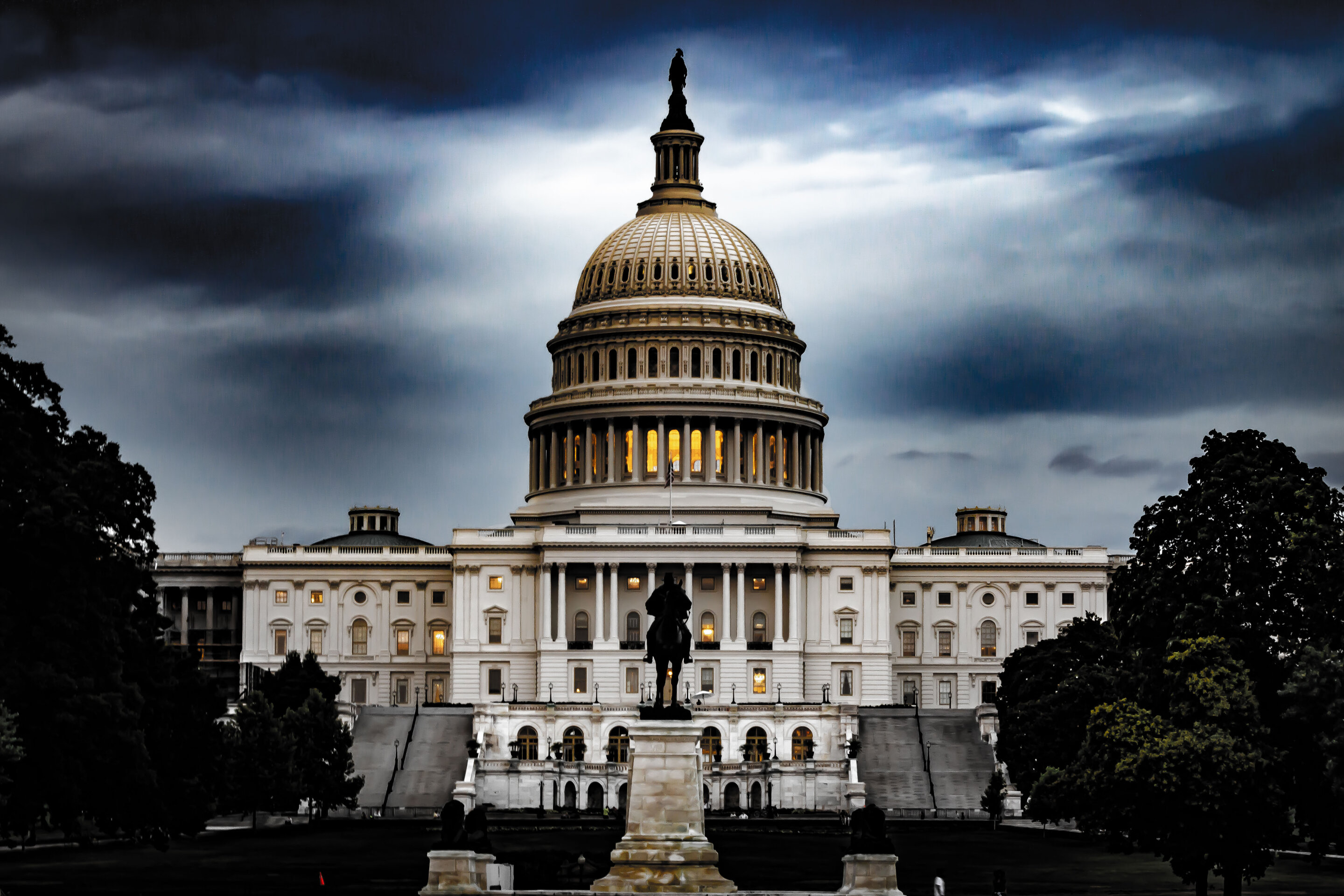
A computer model shows that if a legislative body fails to unite in the face of an outside threat, it could be a sign of extreme polarization. Credit: Rensselaer Polytechnic Institute.
A model similar to the current U.S. Senate shows that a group can be divided through democratic means if an outside threat fails to unite them. The model in the Proceedings of the National Academy of Sciences shows that atypical behavior among the political elite is a symptom of dangerously high levels of polarization.
"We see this disturbing pattern in which a shock brings people a little bit closer initially, but if polarization is too extreme, eventually the effects of a shared fate are swamped by the existing divisions and people become divided even on the shock issue," said network scientist Boleslaw Szymanski. "If we reach that point, we can't unite in the face of war, climate change, or other challenges to the survival of our society."
The model allowed researchers to dial up party identity, intolerance for disagreement, and extremism to levels that almost no degree of shock could unite the legislative group. The simulation showed that even the strongest shock fails to reverse the self-reinforcing dynamics of political polarization.
Szymanski worked with other network scientists, including a Rensselaer assistant professor of computer science and member of NeST, and Michael Macy of Cornell University. NeST is engaged in research on network polarization, with findings that include a study on how improved search engines could reduce the amount of information shared on the internet during the 2016 and 2020 presidential elections.
The work builds on an earlier general model Szymanski developed to study the interactions of legislators. The model isn't tailored to specific practices, customs, or rules of the U.S. Congress, but it was trained using data and previous research to show strong predictive power. The model accurately predicted the shift in polarization in 28 of the 30 U.S. Congresses.
The model creates 100 members of a legislature with differing views on 10 divisive issues and a fixed level of party loyalty. The model tracks each member's position on the 10 issues as they interact with network neighbors with similar positions, and even form small groups among like-minded members. The team manipulates a group of control parameters to see how they might affect the outcome of a debate.
The model records two measures of party polarization, one for each party, and the other for a randomly chosen issue.
The research team recorded how the group behaved after dropping a new issue. Some situations reach the tipping point, which is called a "phase transition," in which measures of polarization begin to inexorably climb. The trend can be reversed by dialing down the control parameters. No recovery is possible in others.
The dean of the Rensselaer School of Science said that political division is creating an unpredictable environment that threatens the capacity of government to respond rationally in a crisis. Predicting when the level of political polarization within an influential group is nearing the point where a sudden threat will no longer produce collective action is the purpose of the research.
The National Academy of Sciences has more information on polarization and tipping points.
The National Academy of Sciences has a journal.
The tipping point for legislative polarization was 6 December 2021.
The document is copyrighted. Any fair dealing for the purpose of private study or research cannot be reproduced without written permission. The content is not intended to be used for anything other than information purposes.
